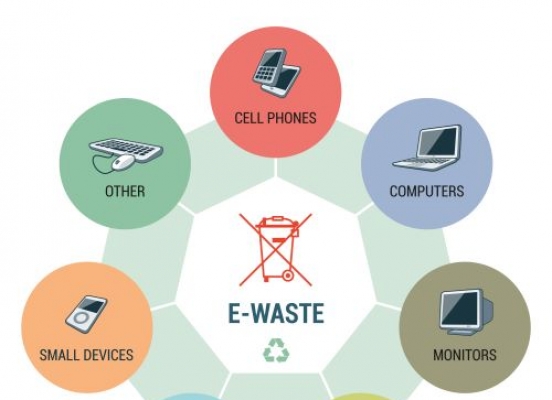How is India dealing with E-waste management?
Technology and other gadgets reduce trouble and unnecessary effort to accomplish the task, but it creates unmanageable electronic waste. E-waste is gradually affecting the environment and human life in a hazardous manner. Before we talk about the methods of controlling e-waste, let’s start by understanding what e-waste is.
What is e-waste?
When electronic products or gadgets stop working, they become electronic waste. Electronic waste is popularly known as e-waste. Television, mobile phones, tablets, refrigerators, ACs, stereos, and other kinds of electric appliances comes under the category of e-waste. Every discarded electronic device goes to landfills, the most traditional method of waste management.
Rise of e-waste
Growth of the IT sectors and innovation in the electronic & communication industry has increased electronic gadgets exponentially. To accelerate business expansion and financial gain, companies are doing faster up-grading their products. Their marketing strategies are influencing the consumers to discard old and workable electronic products quickly. These strategies increase e-waste.
E-Waste Problem in India
According to the report released at the world economic forum 2018, India ranks 177 amongst 180 countries when it comes to waste management. We are one of the worst in waste management, which means that we need to improve our environmental management and health policies.
On the other hand, India ranks fifth in the production of e-waste. We recycle only 2 percent of the total e-waste produced annually. The largest e-waste producers globally are the USA, China, Japan, Germany, and India.
Due to the overpopulation and over consummation of electronic devices, India annually produces more than two million tons of e-waste. Despite this, India imports e-waste from other countries. We neither follow the ideal waste management nor do we engage in recycling. We dump almost 95% of waste to the dumpsite that affects nature and results in groundwater contamination, poor health, environmental crisis, and more.
According to the study of the Associated Chambers of Commerce and Industry of India (ASSOCHAM) and KPMG, Electronic Waste Management in India is categorized and distinguished as per e-waste production. A large amount of e-waste comes from computer equipment (70%), telecommunication equipment, phones (12 %), electrical equipment (8 %), and medical equipment (7 %), and the remaining come from households.
How is India dealing with the issue?
The informal sector dominates the collection, transportation, processing, and recycling of e-waste. In India, a place called Seelampur in Delhi is the largest e-waste dismantling center of India. Adults and children work there to extract reusable components, precious metals like copper, gold, and various functional parts from the devices. They use open incineration and acid to sort the e-waste.
There are serious issues like leakages of toxins into the environment and risks to workers’ safety and health.
India needs to improve the infrastructure and methods of recycling e-waste as most of the e-waste collected here is managed by an unorganized sector.
In the last few years, many informal channels of recycling/reuse of electronics such as repair shops, used product dealers, and e-commerce portal vendors collect a significant amount of e-waste for reuse and cannibalization of parts and components.
Small steps for e-waste management –
- The rise in e-waste is an emphasis on better and faster recycling of e-waste management. This increase in e-waste is impacting the mother earth.
- Being a responsible citizen, we should monitor the usage of electronic products, use them till the time they won’t stop functioning, and repair them instead of buying new ones.
Though the situation is difficult to handle, with the operational activity and contribution of individual efforts, we can better manage e-waste management.

